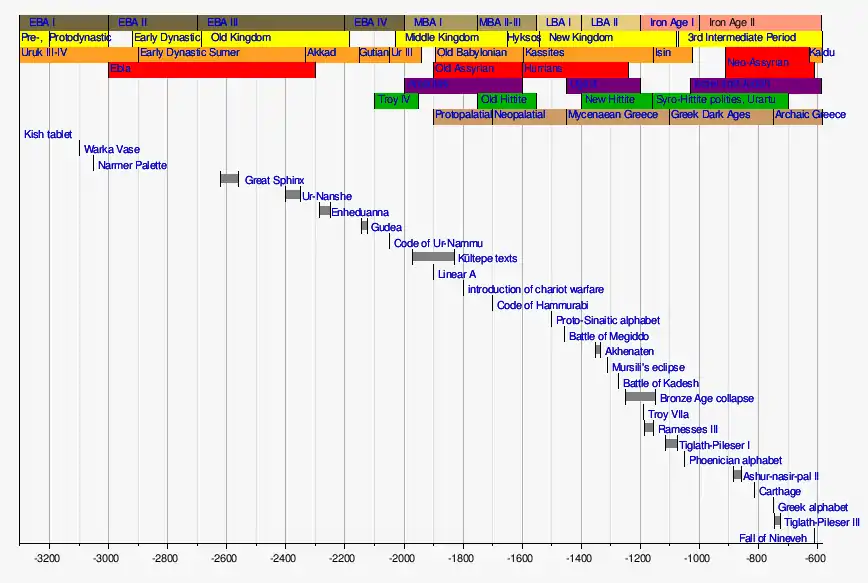Bronze Age India
The Bronze Age in the Indian subcontinent begins around 3000 BCE, and in the end gives rise to the Indus Valley Civilization, which had its (mature) period between 2600 BCE and 1900 BCE. It continues into the Rigvedic period, the early part of the Vedic period. It is succeeded by the Iron Age in India, beginning in around 1000 BCE.
South India, by contrast, remains in the Mesolithic stage until about 2500 BCE. In the 2nd millennium BCE, there may have been cultural contact between North and South India, even though South India skips a Bronze Age proper and enters the Iron Age from the Chalcolithic stage directly. In February 2006, a school teacher in the village of Sembian-Kandiyur in Tamil Nadu discovered a stone celt with an inscription estimated to be up to 3,500 years old.[1] [2] Indian epigraphist Iravatham Mahadevan postulated that the writing was in Indus script and called the find "the greatest archaeological discovery of a century in Tamil Nadu".[1] Based on this evidence he goes on to suggest that the language used in the Indus Valley was of Tamizh (Tamil) origin. However, the absence of a Bronze Age in South India, contrasted with the knowledge of bronze making techniques in the Indus Valley cultures, questions the validity of this hypothesis.
| Date range | Phase | Era |
| 3300-2600 | Early Harappan (Early Bronze Age) | Regionalisation Era c.4000-2500/2300 BCE (Shaffer)[3] c.5000-3200 BCE (Coningham & Young)[4] |
|---|---|---|
| 3300-2800 | Harappan 1 (Ravi Phase) | |
| 2800-2600 | Harappan 2 (Kot Diji Phase, Nausharo I, Mehrgarh and Vinya VII) | |
| 2600-1900 | Mature Harappan (Indus Valley Civilization) | Integration Era |
| 2600-2450 | Harappan 3A (Nausharo II) | |
| 2450-2200 | Harappan 3B | |
| 2200-1900 | Harappan 3C | |
| 1900-1300 | Late Harappan (Cemetery H); Ochre Coloured Pottery | Localisation Era |
| 1900-1700 | Harappan 4 | |
| 1700-1300 | Harappan 5 | |
World timeline

See also
References
- Subramaniam, T. S. (May 1, 2006). ""Discovery of a century" in Tamil Nadu". The Hindu. Retrieved 2008-05-21.
- Subramaniam, T. S. (May 1, 2006). "Significance of Mayiladuthurai find". The Hindu. Archived from the original on April 30, 2008. Retrieved 2008-05-23.
- Manuel 2010, p. 149.
- Coningham & Young 2015, p. 145.
